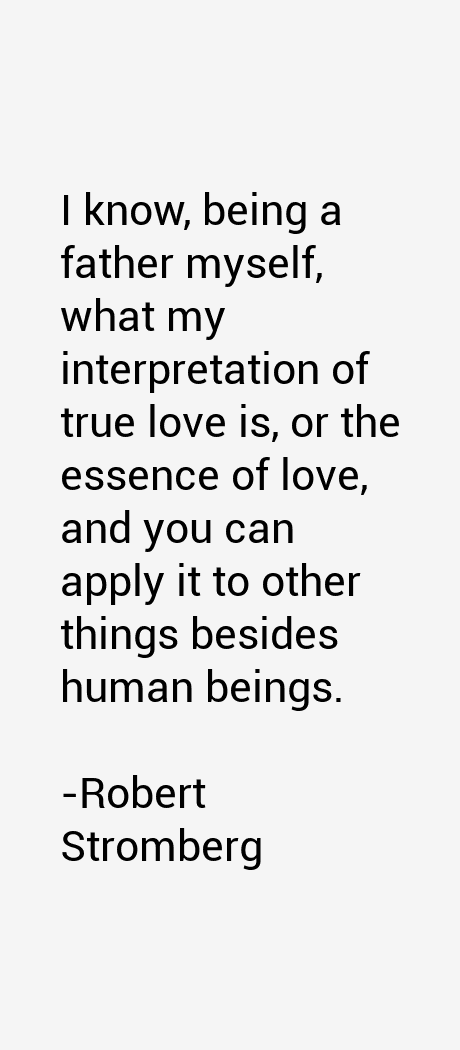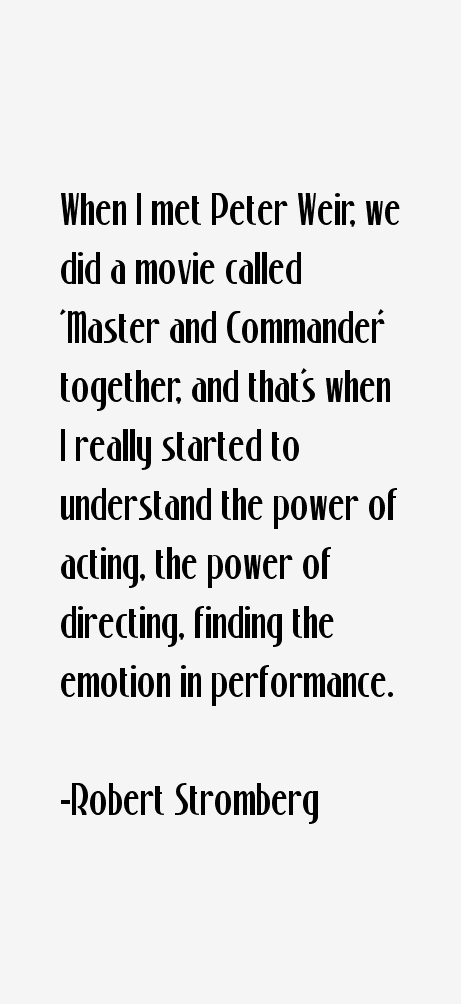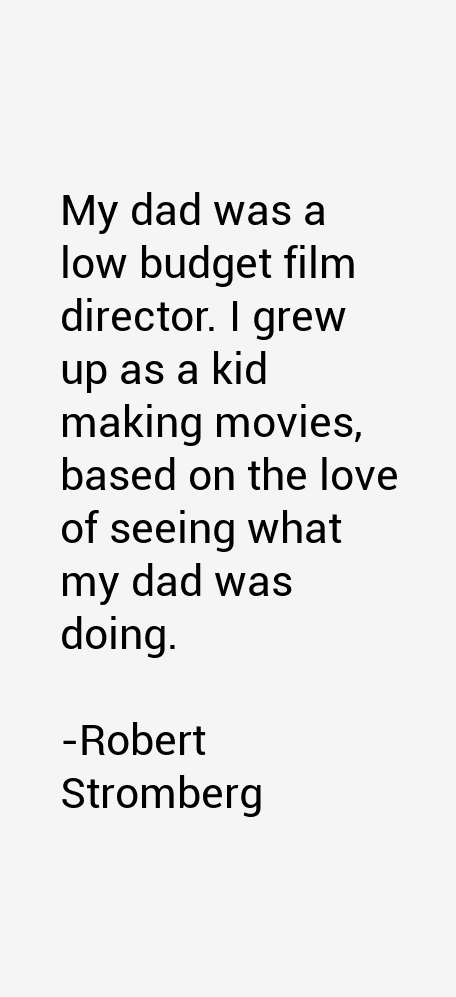Robert Stromberg Quotes & Sayings
9 most famous Robert Stromberg quotes and sayings (artist).
“My father was a low-budget monster movie maker, so he made classics like 'The Crater Lake Monster.' There were always creatures around. And my dad was a huge fan of Ray Harryhausen. One of our neighbors, who went on to win several Academy Awards, was close friends with my dad. His name is Phil Tippett.”
“Something happened when I was in elementary school. A Disney artist named Bruce McIntyre retired, and he had done drawings for 'Pinocchio' and 'Snow White' that was just classic stuff. He moved to the town I grew up in, Carlsbad, and he became a part-time art teacher at our elementary school.”

“I know, being a father myself, what my interpretation of true love is, or the essence of love, and you can apply it to other things besides human beings.”
“Is making a movie true love if you're a creative person? It could be. But in my world, the importance of being a father and having kids and knowing that connection is true love. Making a movie is love.”

“When I met Peter Weir, we did a movie called 'Master and Commander' together, and that's when I really started to understand the power of acting, the power of directing, finding the emotion in performance.”
“I moved out to Los Angeles with the idea of becoming a director, which thousands, if not tens and hundreds of thousands, of people do, every year. It's a very competitive field, of course. I immediately got swept away into the visual side of things, starting with visual effects, and then designing.”
“I used to do stop motion in my own garage and Claymation and all that stuff. That led to doing backgrounds and matte paintings. I started doing matte paintings professionally back before the computer, sort of painting on glass.”

“My dad was a low budget film director. I grew up as a kid making movies, based on the love of seeing what my dad was doing.”
“As a director, the biggest job is to discern the imperfections in emotional tone and then view it in the global picture of what you're trying to do, if that makes sense. It's a rhythm, like music is a rhythm or composition and art is a rhythm. Dialogue is a rhythm as well.”
Robert Stromberg Quotes Rating
No Ratings Yet
Leave A Comment
























